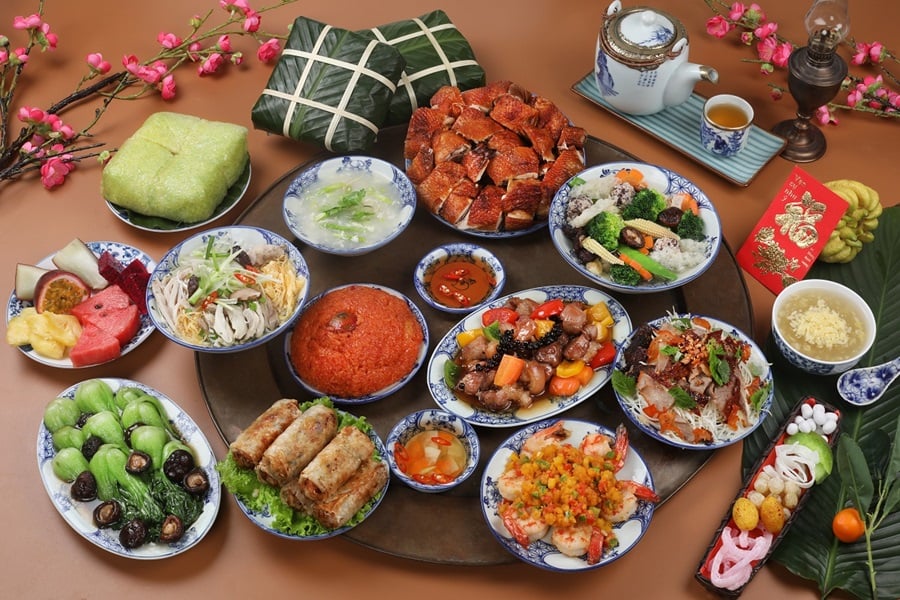
Vietnamese New Year's food is not merely a collection of dishes but a vibrant tapestry woven from centuries of tradition, culture, and symbolism. As the Tet holiday approaches, the anticipation of these delectable offerings grows. In this article, we will delve into the world of Vietnamese New Year's food, exploring the unique flavors, cultural customs, and heartwarming roles they play.
1. Vietnamese New Year’s foods in the northern region
In the three regions of Vietnam, Northern Vietnam has a more traditional and standardized Vietnamese New Year’s meal. People in the North pay a lot of attention to the way they present and prepare their traditional dishes. As modern life advances, there may be some new and unique dishes on the table, but traditional dishes are still indispensable.
1.1. Banh chung
Banh Chung is a square cake made from glutinous rice, mung bean paste, and pork, all wrapped in banana leaves, and then boiled for an extended period, sometimes up to 12 hours. Once the Chung cake is ready, it is often offered to ancestors on the family altar as a form of respect and gratitude.
During Tet, it is a tradition for families to make this cake together. It is a way to strengthen family bonds and pass down culinary traditions from one generation to the next. It is also common for Vietnamese people to present Chung cakes as Tet gifts. Homemade ones are particularly valuable.

1.2. Ga luoc
Ga luoc (boiled chicken) is a popular Vietnamese traditional food in Tet meals. Ga luoc is often made with a whole chicken, including the head and feet. It is a favorite choice for Tet meals because it is simple, symbolizes family togetherness, and allows for different side dishes to be served alongside.
The chicken is cooked with aromatic herbs and spices, which can include lemongrass, ginger, and shallots, to infuse it with flavorful and fragrant elements. Once cooked, it is served with finely sliced lime leaves on top and a dipping sauce, often a mixture of fish sauce, lime juice, garlic, and chili, or salt and lime juice.
1.3. Xoi gac
Xoi gac is a traditional Vietnamese New Year’s food made from glutinous rice and the fruit of the sweet gourd plant, which is bright red-orange and rich in antioxidants. In Vietnamese culture, the color of xoi gac symbolizes luck, happiness, and prosperity, making it a popular choice for festive occasions. It is often served during special events, such as weddings and Tet.
This Vietnamese sticky rice dish has a slightly sweet and nutty flavor, and the red-orange color makes it visually appealing. Sometimes, it is steamed or cooked with coconut milk and sugar to enhance its flavor and sweetness.
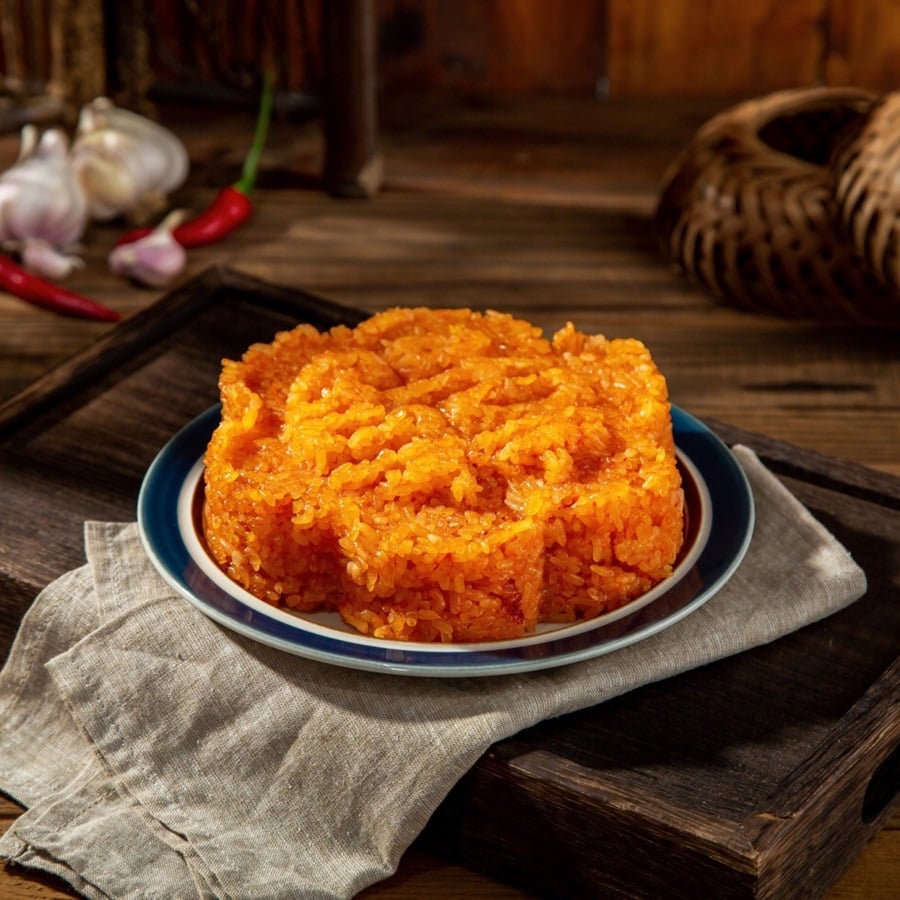
1.4. Gio lua, Gio xao
Gio lua and gio xao are two traditional Vietnamese pork roll dishes often prepared and enjoyed during the Lunar New Year. Gio lua is a type of soft, pinkish sausage typically made from minced pork wrapped in banana leaves and steamed until it is tender. Gio xao is a dish of thinly sliced and stir-fried pork sausages with various spices and fresh vegetables. Both gio lua and gio xao are enjoyed alongside sticky rice and other dishes at Tet feasts.
1.5. Nem ran - A popular Vietnamese New Year’s food
Nem ran (Vietnamese spring rolls) is a traditional Vietnamese dish often prepared and enjoyed during Tet. It is typically made from ingredients such as minced pork, shrimp, and vermicelli noodles. Nem ran has a flavorful taste, with a crispy exterior and a tender interior.
Vietnamese spring rolls are commonly served during Tet to welcome the new year. They are an essential part of Tet feasts and are usually enjoyed alongside other dishes such as banh chung and sticky rice.
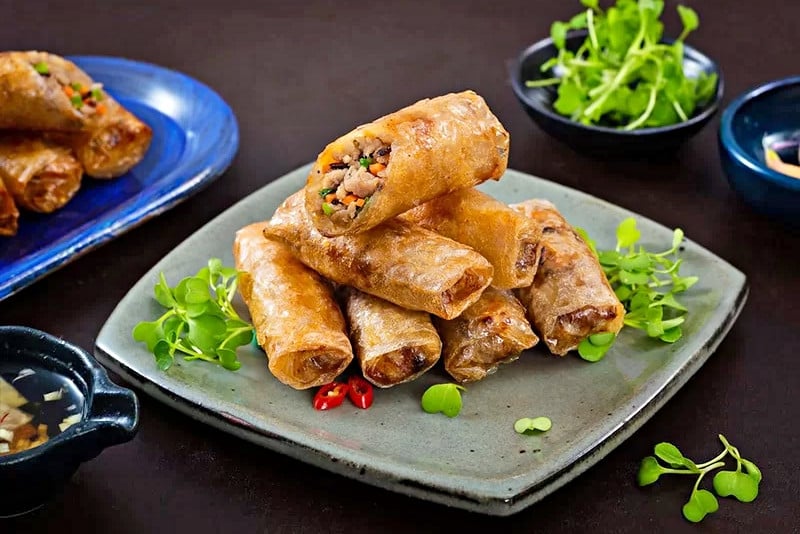
1.6. Thit dong
Thit dong is another traditional Vietnamese New Year's food that is often featured in Tet meals. It is essentially pork that has been processed and preserved in a gelatinous form. The preparation of the dish involves cooking pork along with various spices and herbs and then mixing them with a gelatinous broth, usually derived from boiling pork skin and bones.
Once the mixture sets, it forms a firm, sliceable, and savory jelly-like dish that can be cut into thin slices or cubes for serving. Thit dong is typically served cold and may be accompanied by rice, pickled vegetables, and soy sauce. The process of making thit dong is labor-intensive and can take time, but that is what makes it a symbol of the care and dedication that goes into preparing special meals for the holiday.
1.7. Dua hanh
Dua hanh is made from white onions soaked in a mixture of salt water (or fish sauce) and sugar. This combination creates a unique blend of salty, sweet, and sour flavors from the fermentation process. It is a traditional dish commonly seen on the table during Tet.
It is often enjoyed alongside meat dishes or other foods, adding variety to the meal. Tet pickled onions are also served to ancestors as an expression of gratitude and hope for a prosperous new year.
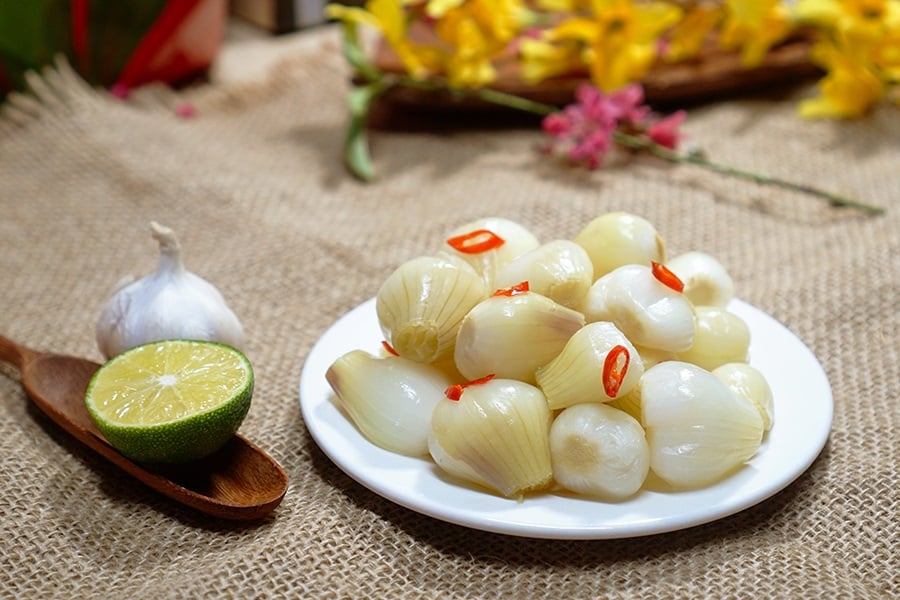
1.8. Canh bong bi lon - A healthy Vietnamese food for Lunar New Year
Canh bong bi lon is a traditional Vietnamese soup often prepared and enjoyed during the Lunar New Year. The soup can have a few different variations, but pork skin is the key element. Additional ingredients include carrots, broccoli, and mushrooms. During Tet, canh bong bi lon is commonly served with white rice and other savory dishes.
1.9. Canh mang
Canh mang is another traditional Vietnamese New Year's soup made with bamboo shoots cooked in a fragrant broth with pork, shrimp, or chicken. Canh mang is considered a symbolic dish of Tet, reflecting respect and celebration for family and ancestors. It is an important part of the Tet meal in Vietnam and is typically enjoyed alongside many other dishes in the family, sharing joy and creating memories during this festive season.
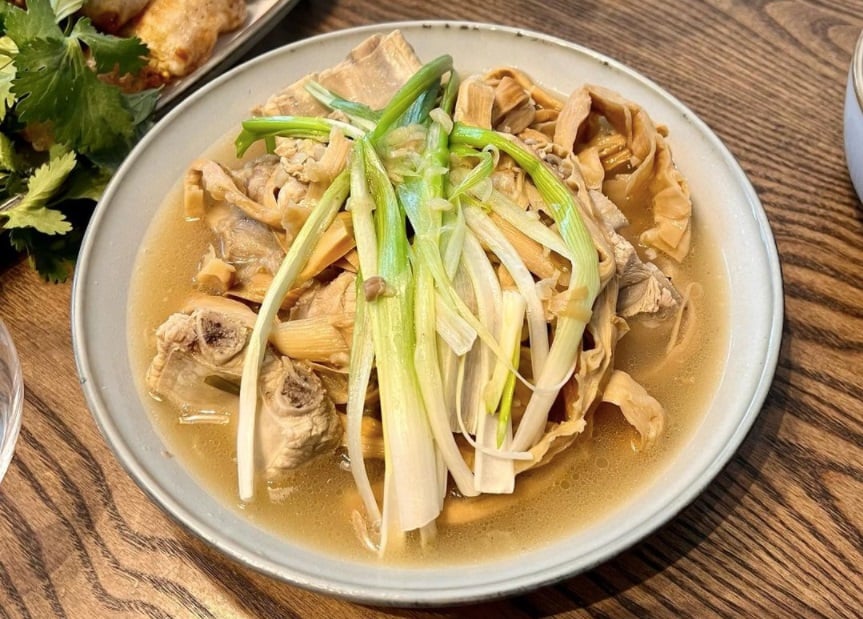
2. Vietnamese New Year’s foods in the central region
The Central region has a harsh climate throughout the year, so the people in Central Vietnam pay more attention to food preservation. The dishes on the table are often served in small bowls or plates, but the variety in how the food is prepared is remarkable. In addition to the essential dishes in a Tet meal, the Central region also has the following dishes:
2.1. New Year’s cakes
Traditional Tet cake in the North is rectangular and called banh chung. In the South, it is cylindrical and goes by the name banh tet. In the Central region, both banh chung and banh tet are prepared.
However, the banh chung is generally smaller and contains less filling compared to the ones made in the North. Banh tet in the Central region closely resembles the style of banh tet from the South, but it is mainly meant for household consumption and is not commonly given as gifts, as it is in the South.
This difference arises from a local superstition. In the Central region, the term "don banh tet" sounds similar to "don roi,” which means “whip,” so people avoid using banh tet as gifts because it might be associated with punishment.
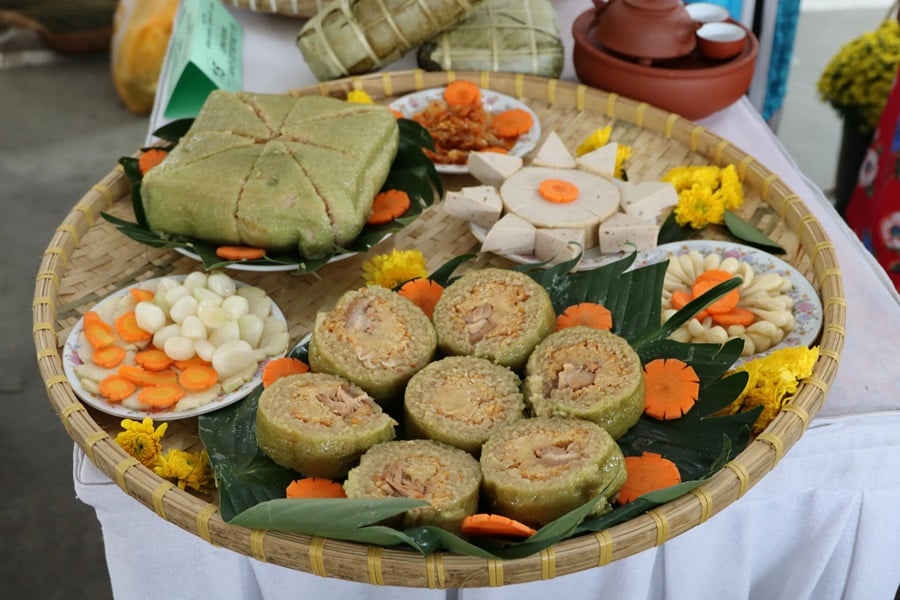
2.2. Nem chua
Nem chua, also known as Vietnamese fermented pork or sour sausage, is a popular traditional dish in Vietnamese cuisine. It is made from ground pork that is mixed with various ingredients and left to ferment for a period, allowing the flavors to develop into a slightly sour taste.
After the fermentation process, the mixture is typically shaped into small, bite-sized portions and served with herbs and vegetables such as lettuce, mint, cilantro, and slices of cucumber. On Tet, Vietnamese families serve fermented pork rolls as an appetizer.
2.3. Tom chua - An essential Vietnamese New Year food in the central region
Tom chua, or pickled shrimp, is a traditional dish in Central Vietnam, particularly popular during the Tet holiday. This dish is prepared by marinating fresh shrimp in a mixture of spices, fish sauce, sugar, and chili, resulting in a sweet, salty, and slightly spicy flavor.
During Tet in Central Vietnam, tom chua is often featured as a special treat. Families prepare it in advance, allowing the shrimp to absorb the flavors of the marinade and develop a unique taste. It is typically served as an appetizer or side dish during the Tet celebration, and its bright and refreshing flavors make it a favorite choice, especially when welcoming the Lunar New Year.
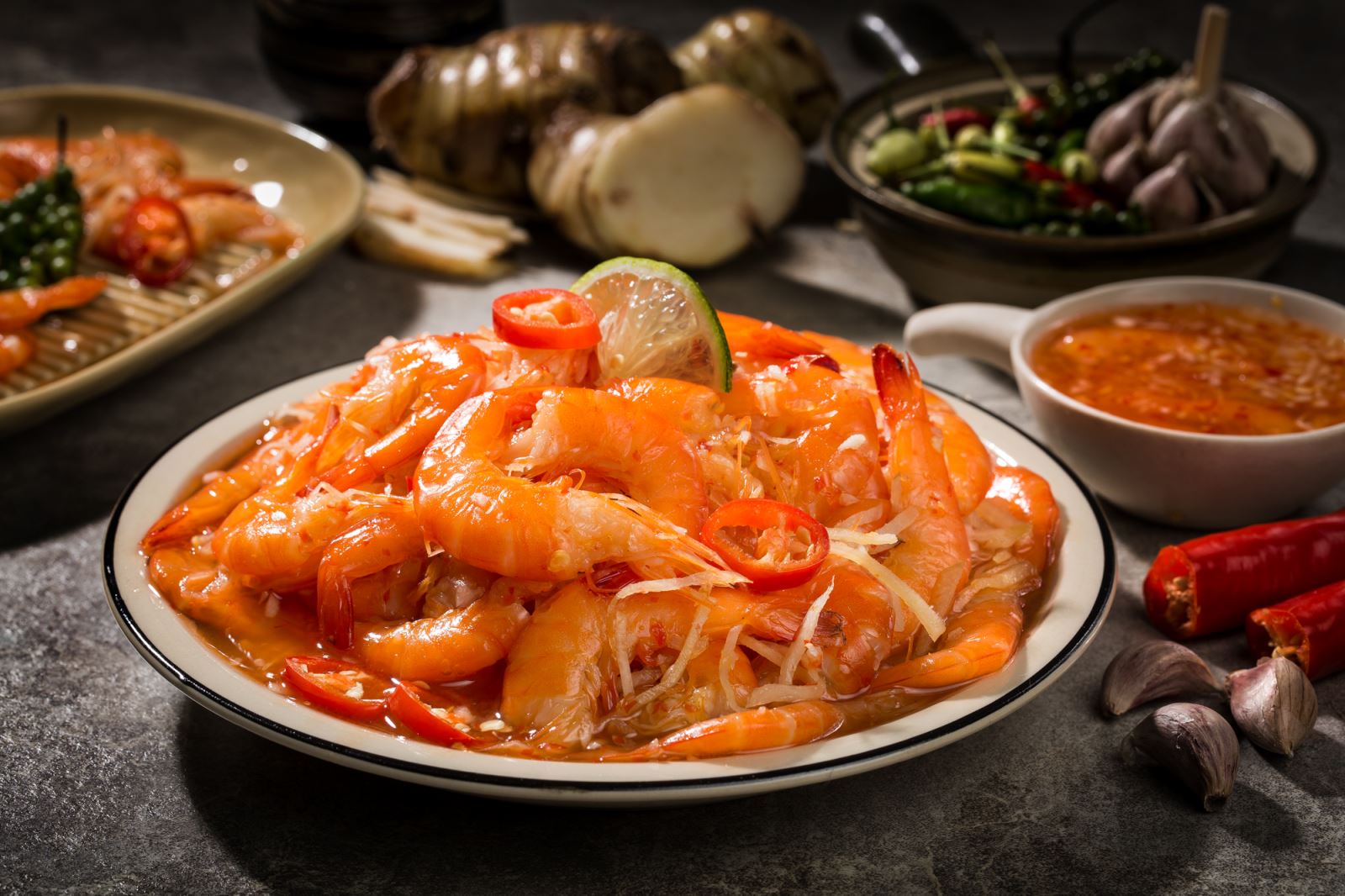
2.4. Thit heo ngam mam
Pork marinated in fish sauce is a Central Vietnamese pork dish often prepared and enjoyed during the Tet holiday. To make it, thin slices of pork are typically soaked in a mixture of fish sauce, sugar, garlic, chili, and various spices for an extended period to absorb the distinctive flavors. For a Tet feast in Central Vietnam, pork marinated in fish sauce is savored with steamed rice and other dishes within the family.
2.5. Banh to
Banh to is a Vietnamese cake made from glutinous rice, cane sugar, and garlic. It can be eaten raw, grilled, or deep-fried. If you eat it raw, your tongue will feel the sweetness of sugar, the spiciness of ginger, and the softness of sticky rice. If you grill it over a charcoal fire, it will give off the characteristic aroma of sticky rice, and when deep-fried, it puffs up with a subtle aroma. In the lead-up to the Lunar New Year, families often come together to make banh to, turning the process into an important part of their Tet preparations.
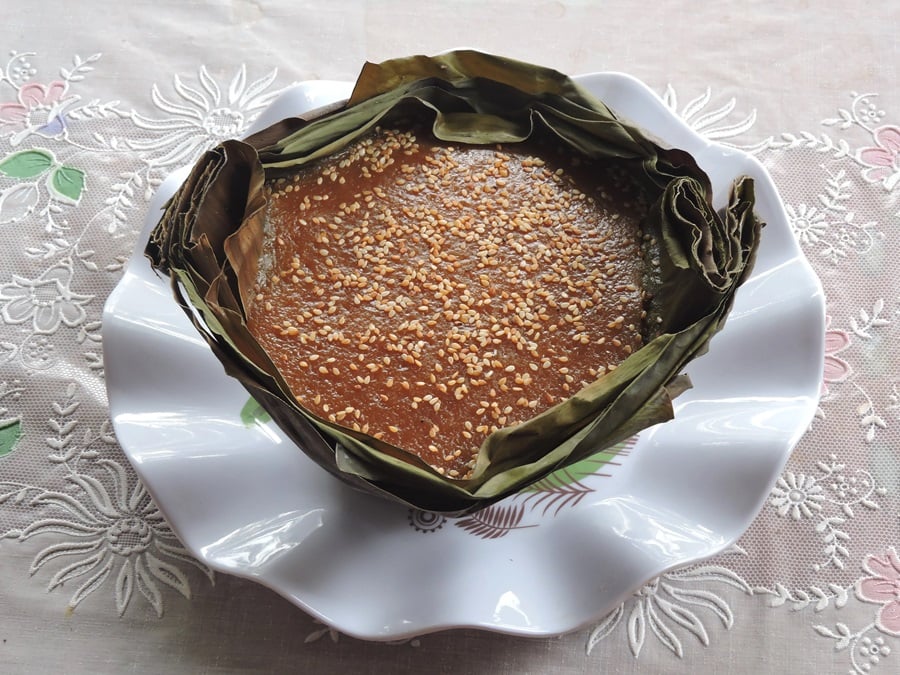
2.6. Bo kho mat mia
Bo kho mat mia is one of the traditional dishes of Central Vietnam enjoyed during the Tet holiday. This dish combines the sweetness of sugarcane juice, the chewiness of bap bo, and the deliciousness of a simmering stew, creating a unique and special flavor.
It is a tasty and nutritious dish, usually placed on the Tet dinner table to show respect for ancestors and to wish for a prosperous New Year. Typically, bo kho mat mia is enjoyed alongside other traditional dishes during the Tet holiday in Central Vietnam.
3. Vietnamese New Year’s foods in the southern region
Contrary to the cold weather in the North, the southern region welcomes Tet with lingering warmth and sunlight. Furthermore, the South boasts a wealth of produce, and it historically served as a region for migration, so the Tet feast in South Vietnam is relatively more diverse and less focused on formal rituals compared to the Northern region.
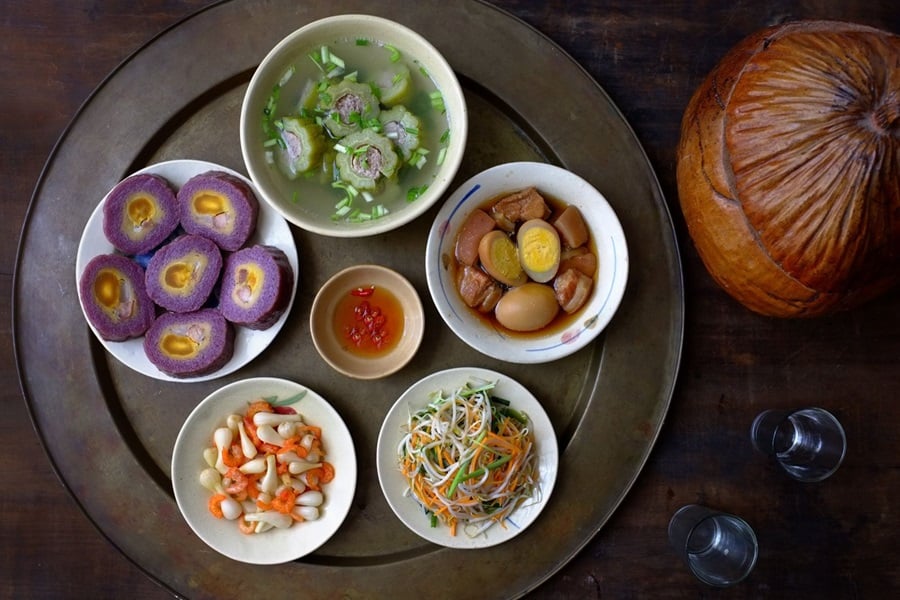
3.1. Cu kieu tom kho
Cu kieu tom kho is a tasty Vietnamese side dish often enjoyed during the Lunar New Year. It combines the richness of “tom kho,” which means dried shrimp, with the crispness of pickled vegetables, or “cu kieu,” creating a harmonious blend of flavors and textures.
The dish is often characterized by its vibrant colors; the orange of the dried shrimp and the pale, crisp white of the pickled vegetables create a visually pleasing and appetizing combination. It is customary to serve cu kieu tom kho in small, decorative dishes during Tet.
3.2. Canh kho qua - A must-have on the typical Southern Vietnamese New Year food menu
The main ingredient in canh kho qua is bitter melon, or bitter gourd. Bitter melon has a distinct bitter taste, but it is renowned for its potential health benefits, including being a source of vitamins and minerals. In Vietnamese culture, it is believed that consuming bitter melon during Tet can help cleanse the body and bring good luck for the coming year.
To prepare this Vietnamese soup, the bitter melon is typically sliced into thin rounds or strips and then blanched or parboiled to reduce its bitterness. The cooked bitter melon is then incorporated into a flavorful broth made from various ingredients, such as pork, pork, or fish. Additionally, the soup is seasoned with garlic, shallots, and sometimes a bit of fish sauce.
While not everyone may appreciate the bitter taste of canh kho qua, it remains a part of Tet meals for those who value its potential health benefits and its role in carrying forward cultural traditions during this important Vietnamese celebration.
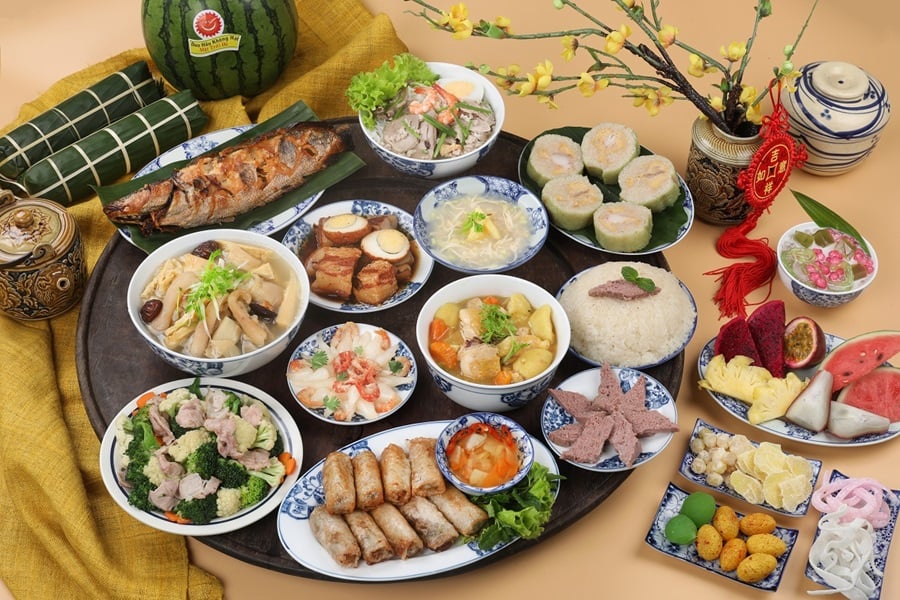
3.3. Thit kho tau
Vietnamese braised pork belly is a beloved and classic Vietnamese dish that often takes center stage during Tet in South Vietnam. It is a flavorful dish featuring caramelized pork, hard-boiled eggs, and a variety of aromatic spices and seasonings.
The pork is cut into bite-sized pieces and then simmered with a combination of fish sauce, sugar, garlic, shallots, and black pepper. Next, hard-boiled eggs are added, and everything is slow-cooked until the pork becomes tender and infused with the sweet and savory flavors of the caramelized sauce.
This Vietnamese New Year's food is not only appreciated for its delicious taste but also for the sense of tradition and family it embodies. It is often prepared in large quantities, bringing family members together in the kitchen to help with the cooking process.
During Tet, thit kho tau is commonly served with steamed white rice, and it is a staple in the festive Tet meal spread. The rich and aromatic flavors of the dish, along with its cultural significance, make it a cherished tradition that encapsulates the spirit of Tet and the hope for a prosperous and harmonious new year.
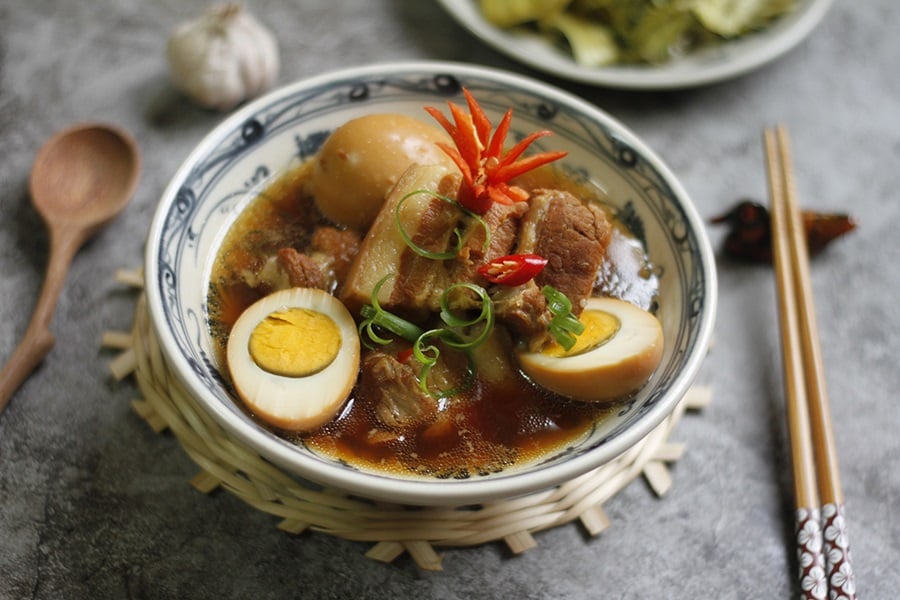
3.4. Banh tet
Banh tet is a traditional Vietnamese sticky rice cake that holds a special place in South Vietnam during the Tet. It is a cylindrical-shaped cake made from glutinous rice, mung bean paste, and often a pork filling wrapped in banana leaves.
Its history can be traced back for generations, and its preparation has become a beloved family tradition. The making of banh tet brings family members together in a communal effort. It fosters a sense of unity and togetherness, reflecting the importance of these values during the holiday season. During Tet, families often offer banh tet to their ancestors on the family altar. This act is a sign of respect and gratitude for the protection and blessings sought for the coming year.
3.5. Lap xuong
These sausages are traditionally made from minced pork, pork fat, and various seasonings, including garlic, salt, and sugar. Some regional variations may include additional ingredients such as soy sauce or five-spice powder, giving them distinctive flavors.
During Tet celebrations, families in South Vietnam often exchange lap xuong as a symbol of prosperity and good fortune. The reddish color of the sausages is believed to bring wealth in the coming year. As a result, they are commonly given as gifts to friends, family, and acquaintances.
Lap xuong is also a staple in many Tet dishes. It can be enjoyed in various ways, such as sliced and eaten as a snack, added to stir-fries, or included in traditional dishes like xoi. The savory and slightly sweet taste of lap xuong complements other Vietnamese New Year's foods, creating a harmonious blend of flavors and textures.
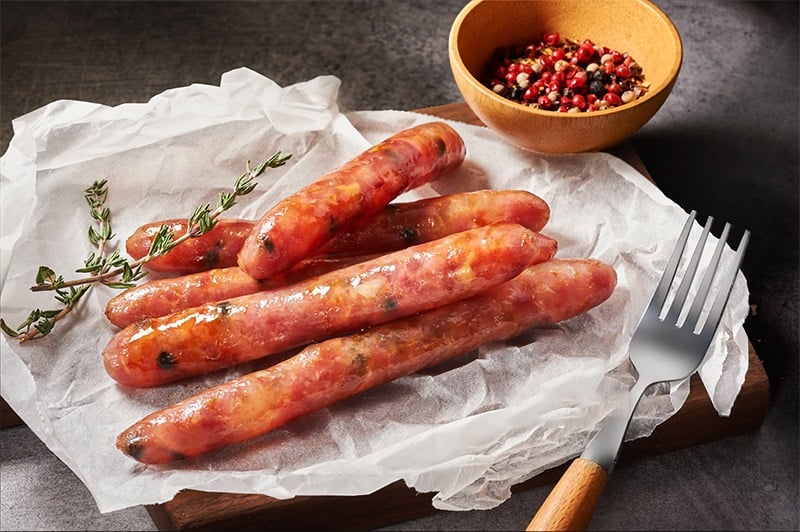
To try these Vietnamese New Year's foods, you should embark on a trip to Vietnam and visit destinations like Hanoi, Ho Chi Minh City, Phu Quoc, Nha Trang, Hoi An, Ha Long… You will surely experience an authentic Vietnam travel experience while you are there.
It is highly recommended to stay at Vinpearl hotels and resorts and visit VinWonders at these destinations to further enhance your Tet celebration. The former's luxurious accommodations and amenities will pamper you, and the latter's endless entertainment opportunities will leave you with memories that you will not soon forget.
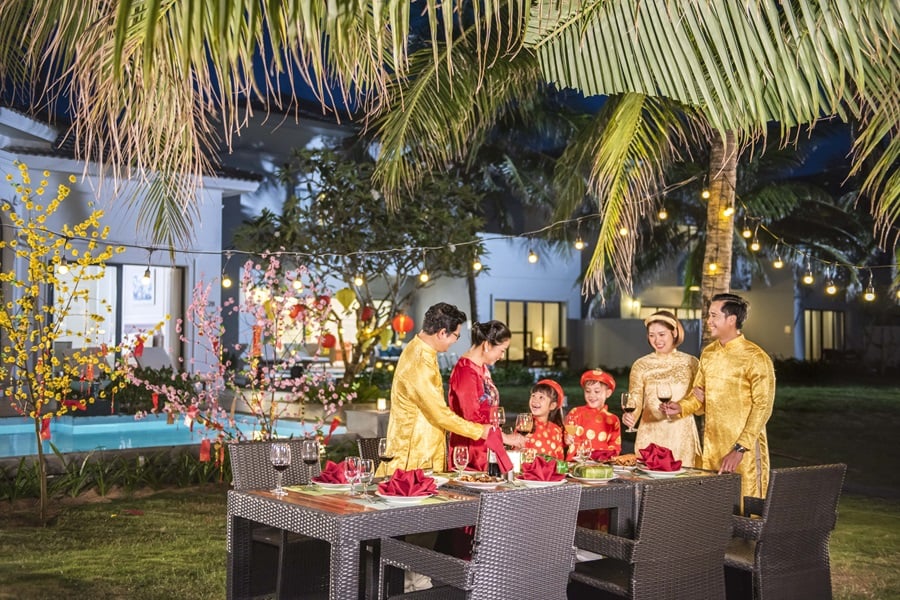

>>> Book rooms in Vinpearl Phu Quoc, Vinpearl Nha Trang, Vinpearl Resort & Golf Nam Hoi An, Vinpearl Resort & Spa Ha Long for accommodations while exploring Vietnamese New Year's food!
Vietnamese New Year's food, an embodiment of cultural heritage and culinary artistry, holds a special place in the hearts and homes of people celebrating Tet. Beyond their delightful flavors, these dishes carry profound symbolism, embodying wishes for prosperity, good fortune, and family unity. For the upcoming Lunar New Year, be sure to include these Tet foods on your menu. They will not only tantalize your taste buds but also allow you to partake in the customs that make Tet a truly special and cherished time for Vietnamese families.
























